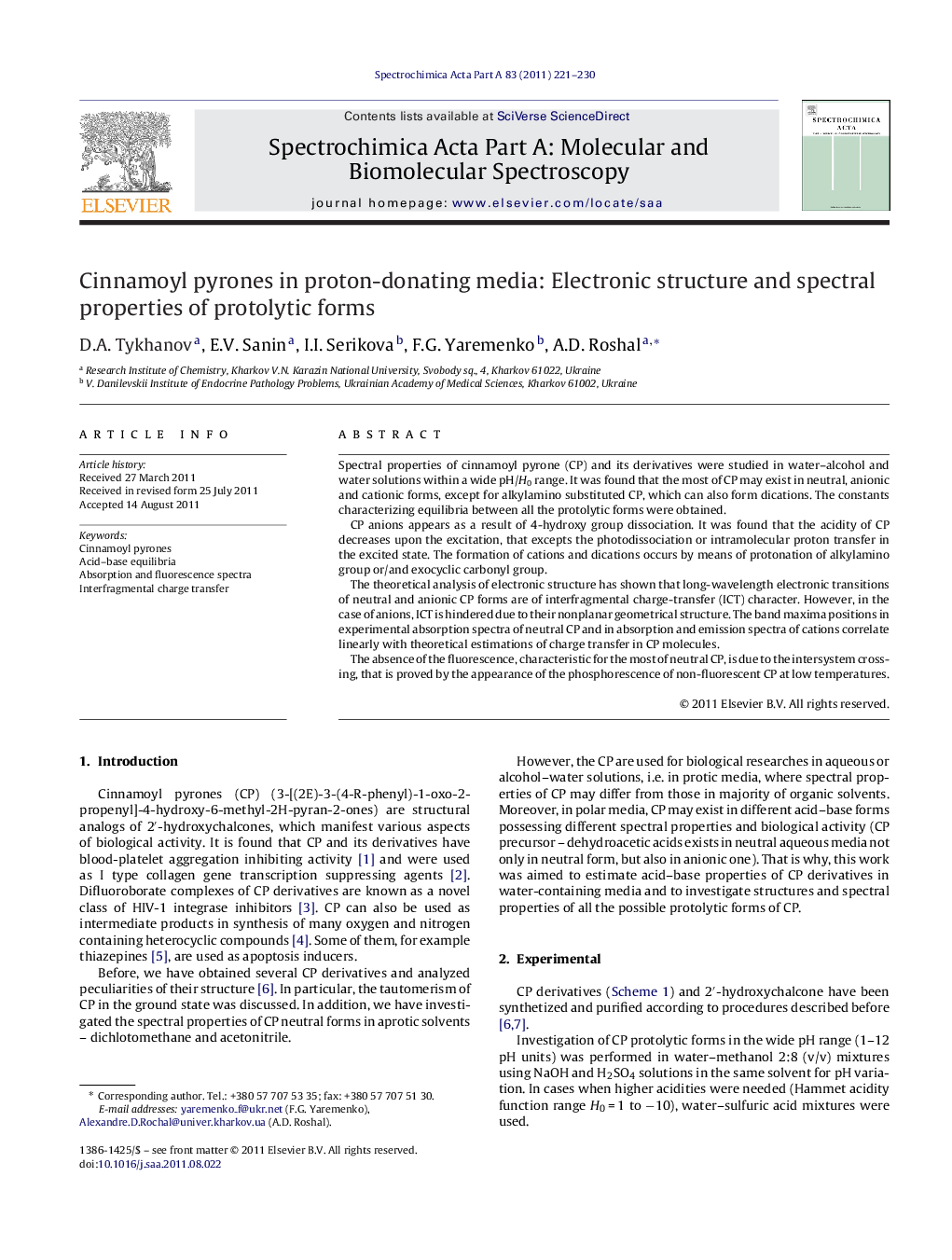| Article ID | Journal | Published Year | Pages | File Type |
|---|---|---|---|---|
| 1235172 | Spectrochimica Acta Part A: Molecular and Biomolecular Spectroscopy | 2011 | 10 Pages |
Spectral properties of cinnamoyl pyrone (CP) and its derivatives were studied in water–alcohol and water solutions within a wide pH/H0 range. It was found that the most of CP may exist in neutral, anionic and cationic forms, except for alkylamino substituted CP, which can also form dications. The constants characterizing equilibria between all the protolytic forms were obtained.CP anions appears as a result of 4-hydroxy group dissociation. It was found that the acidity of CP decreases upon the excitation, that excepts the photodissociation or intramolecular proton transfer in the excited state. The formation of cations and dications occurs by means of protonation of alkylamino group or/and exocyclic carbonyl group.The theoretical analysis of electronic structure has shown that long-wavelength electronic transitions of neutral and anionic CP forms are of interfragmental charge-transfer (ICT) character. However, in the case of anions, ICT is hindered due to their nonplanar geometrical structure. The band maxima positions in experimental absorption spectra of neutral CP and in absorption and emission spectra of cations correlate linearly with theoretical estimations of charge transfer in CP molecules.The absence of the fluorescence, characteristic for the most of neutral CP, is due to the intersystem crossing, that is proved by the appearance of the phosphorescence of non-fluorescent CP at low temperatures.
Graphical abstractFigure optionsDownload full-size imageDownload as PowerPoint slideHighlights► Spectral properties of cinnamoyl pyrone derivatives within a wide pH/H0 range. ► Parameters of equilibria between cinnamoyl pyrone protolytic forms. ► Geometry and electronic structure of cinnamoyl pyrone protolytic forms.
